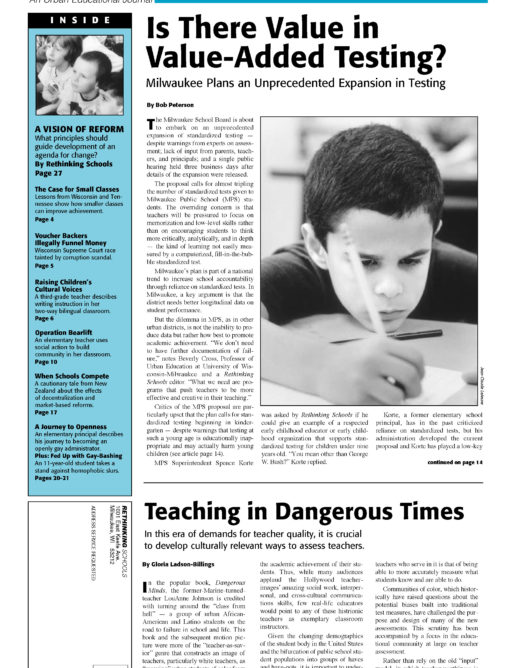Preview of Article:
Is There Value in Value-Added Testing?
The MPS proposal relies on a concept of longitudinal testing known as “value-added assessments,” devised by William Sanders, a professor of statistics at the University of Tennessee. This approach is nominally designed to see how much “educational value” has been added to a student during a given time. It is especially popular in Tennessee, Texas, and North Carolina.
The heart of the MPS proposal is an increased emphasis on standardized testing and a decreased emphasis on performance-based assessments. Under the plan, an MPS student would take 52 standardized tests during their kindergarten through high school career, compared to the 19 standardized tests a student currently takes.
Presently, the first standardized test administered districtwide is the Wisconsin Reading Comprehension Test, (also known as Third Grade Reading Test) as part of a statewide mandate. MPS students also currently take the state-mandated standardized tests that are given in six academic subjects in fourth, eighth, and 10th grades. These tests, known as the Wisconsin Student Assessment System (WSAS) tests or Terra Nova tests, are developed by the publishing conglomerate McGraw-Hill. Beginning in 2004, state law requires that the district administer a high school graduation test.
The new MPS plan adds yearly standardized tests in four academic areas (math, writing, language arts, and reading) for students in first, second, third, fifth, sixth, seventh and ninth grades – the grades not covered by the statewide test. In kindergarten students will be given a reading test. Thus, students will take standardized tests in every grade. This expansion is not required by the state.
Indications are that the new series of MPS standardized tests will be bought from McGraw-Hill. The exact cost is unclear.</p

